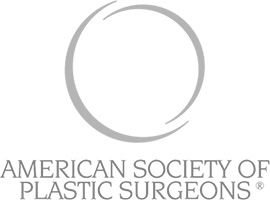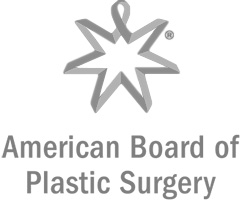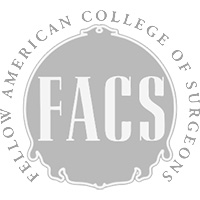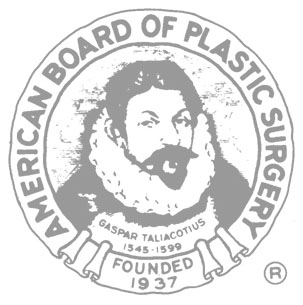ARM LIFT, BRACHIOPLASTY
– POST-BARIATRIC SURGERY –Arms after Massive Weight Loss
Typically, with significant weight gain and loss, the soft tissue of the arm will lose its connective tissue attachments to the underlying structures and will thus sag on the under-surface, leading to ptosis (sagging) or the bat-wing appearance. Excess skin often extends from the armpit all the way to the elbow.
Furthermore, the armpit tissue often sags by an inch or more. This can be a frustrating problem that leads to rashes, irritation, malodor, infection (Hydradenitis) and ill-fitting clothing issues. These problems cannot simply be treated with liposuction because when the skin is already loose, removing more fat will actually worsen the appearance of the arms.






Arm Reduction Surgery
Dr. Agha performs several types of arm enhancement surgeries. Please refer to our section on arm enhancement to learn about arm liposuction and arm lift surgeries. In weight loss patients, depending on the degree of arm tissue excess and laxity, Dr. Agha will plan a customized approach for your surgery. This means adequately assessing the excess skin and excess fat over the elbow, upper arms, and armpits, and even outer chest. Each of these components will determine which procedure is best for you.
Types of Brachioplasty
Dr. Agha performs multiple arm lift surgery procedures depending on the need of a patient. These can be classified as:
Limited arm lift with an incision in the armpit area. This typically results in minimal correction of the arm skin laxity. The limited arm lift procedure is suitable for those patients who essentially have excess arm skin only with no excess arm fat, as seen with ageing. This limited arm lift is truly limited not only in terms of the degree of correction but also in terms of people who will benefit from it. The limited arm lift pulls the arm skin towards the armpit and has limited uses since most patients need an arm reduction- to reduce the arm circumference.
Extended arm lift is the most popular arm lift procedure that is used for most patients. This procedure is reserved for those patients who have moderate to severe skin and tissue laxity. The incision is placed on the inner aspect of the arm from the armpit to the elbow. Through this incision, an elliptic of excess skin and underlying fat are excised and the arm circumference is reduced. Up to several inches of excess arm tissue can be removed through this technique by Dr. Agha. The procedure serves best those patients who have significant arm tissue excess and laxity, with no armpit laxity.
L-brachioplasty is a procedure that was specifically created for the weight loss patient by Dr. Dennis Huwitz. Unlike other patients, the weight loss patient often experiences significant arm tissue excess as well as armpit sagging. These patients will need a procedure that reduces the circumference of the hanging arm while correcting the armpit excess and sagging. The L-brachioplasty is performed by placing a L-shaped incision from the elbow to the armpit and down over the armpit. Through this incision, the excess tissue and skin of the arm are removed and the armpit sag and hollowness are corrected. This results in a leaner arm contour with correction of the armpit laxity. Dr. Agha also usually performs liposuction of the elbow area to thin out the elbow fat pad that persists in many weight loss patients.
For those patients who have outer chest excess, the L-brachioplasty combined with a J-upper body lift provides correction of the arm laxity, armpit sagging, as well as outer chest looseness.
L-brachioplasty usually takes about 2 to 3 hours to complete. However, for most weight loss patients, Dr. Agha recommends combining the L-brachioplasty with other body contouring procedures, such as bra-line upper body lift, J-upper body lift, breast enhancement, and reverse tummy tuck surgery to complete the upper body in one stage.
All of these surgeries can often be done as same day surgery, letting the patient return home for recovery the same day.
Dr. Agha’s Arm Lift Incisions
According to plastic surgery teachings and textbooks, there are 2 arm lift incisions. Incisions that are placed over the brachial groove of the inner arm or incisions that are placed at the back of the arm. Although, Dr. Agha used to perform the brachial groove incision at the beginning of his practice, since 2010, he has modified his incision placement to a more unique position. Dr. Agha now places his incision in the shadow area of the upper arm- in between the front and back of the arm. In this fashion, the incision becomes less noticeable when the arms are lifted. Also, for most patients, Dr. Agha performs liposuction of the elbow area to smoothen the contour when needed.
Arm Lift Surgery Recovery
The recovery period after an arm lift generally takes about 2-3 weeks. During this period, we prefer to have your arm incisions dressed with a surgical pad, and your arms wrapped in Ace bandage. Ace bandage should always be applied, starting at the thumb and going up all the way to the arm pit over the dressings. Arm lift healing can be optimized by reducing swelling. The best way to achieve this is to have your arms placed over 2-3 pillows so that the arms end up being higher than your heart level. If your hands swell up, you may remove the Ace bandages for 4-6 hours and then reapply them. During this time, keep your arms elevated. If you use your arms typing or working, then the whole upper extremity (arms, forearms, and hands) may swell up. This can cause tingling of the hands, numbness and tightness of the arms and can also interfere with your healing.
Dr. Agha recommends not using arm sleeves until your incisions are completely sealed. This is because taking and putting arm sleeves on and off may actually place too much tension on the arm incisions and pull them apart.
Arm Lift Surgery Results
Arm lift surgery results in the elimination of flabby skin of the arms and an appearance of a smoothly toned upper arm. Furthermore, with L-brachioplasty, the armpit sagging is corrected and the armpits are returned to their normal position. As with other body contouring procedures, the complete benefits of an arm lift may take 3+ months to appreciate. This is because time is needed for all of your swelling to subside.
The final outcome of an arm lift is dependent on multiple factors which can be broken down to three major elements.
- Optimal Healing: As with any body contouring surgery, the final results of the surgery is ½ dependent on the surgeon and ½ dependent on optimal healing.
- Arm skin quality: If the arm skin is robust and not damaged, the arm lift results persist for years to come. However, if the skin quality is poor due to cycles of weight gain and loss, stretch marks, dermal damage, e.t.c., then the arm skin stretches gradually after the arm lift procedure and result in about 20% relaxation at about 4 to 6 months.
- Arm Lipodystrophy. This is the thickness of the fat below the arm skin circumferentially. If despite significant weight loss the arms continue to be big, then the arms will develop some sagging at about 3-6 months after an arm lift. Although a 70 to 80 percent correction is achieved, the excess fat under the arm skin will gradually sag and stretch out the arm skin and the scar.
- Weight gain or loss. Although the results of the arm lift procedure are considered permanent, weight fluctuations after surgery can adversely affect your arm lift results. If patients lose additional weight of 20 pounds or more after an arm lift, they may develop more skin laxity after the procedure. Furthermore, significant weight gain can adversely misshapen the arm fat distribution.
Arm Lift Revision
As an expert body contouring surgeon, Dr. Agha usually is asked to perform about 5 or more arm lift revisions every year. The reasons for these revisions are all variable but most have to do with one of the followings:
- Asymmetrical arm results
- Poor arm scars
- No arm pit correction
- Not enough arm skin was excised and there is significant remaining skin excess
- Scar asymmetry
- Arm banding
Although a revision will always improve the results, it will never be as good as if Dr. Agha had done your first procedure. Often times, Dr. Agha has to excise the existing arm scar and work from there. If the scar is too high, it can only be brought down so much. Each revision requires an understanding of the problems as outlined above and a customized plan to correct the issues at hand. Dr. Agha will always make sure that you understand what the plan is and how much correction can be achieved before proceeding with an arm lift redo.













